AP World History Unit 3: Land-Based Empires
1/71
There's no tags or description
Looks like no tags are added yet.
Name | Mastery | Learn | Test | Matching | Spaced |
|---|
No study sessions yet.
72 Terms
Qing Dynasty of China
The last imperial dynasty of China, preceded by the Ming Dynasty and succeeded by the People's Republic. Formed the territorial base for the modern Chinese state. Founded in 1644 by the Manchus and ruled China for more than 260 years, until 1912. Expanded China's borders to include Taiwan, Tibet, Chinese Central Asia, and Mongolia.
Manchus
Northeast Asian peoples who defeated the Ming Dynasty and founded the Qing Dynasty in 1644, which was the last of China's imperial dynasties.
Mughal Empire
Muslim state (1526-1857) exercising dominion over most of India in the sixteenth and seventeenth centuries.
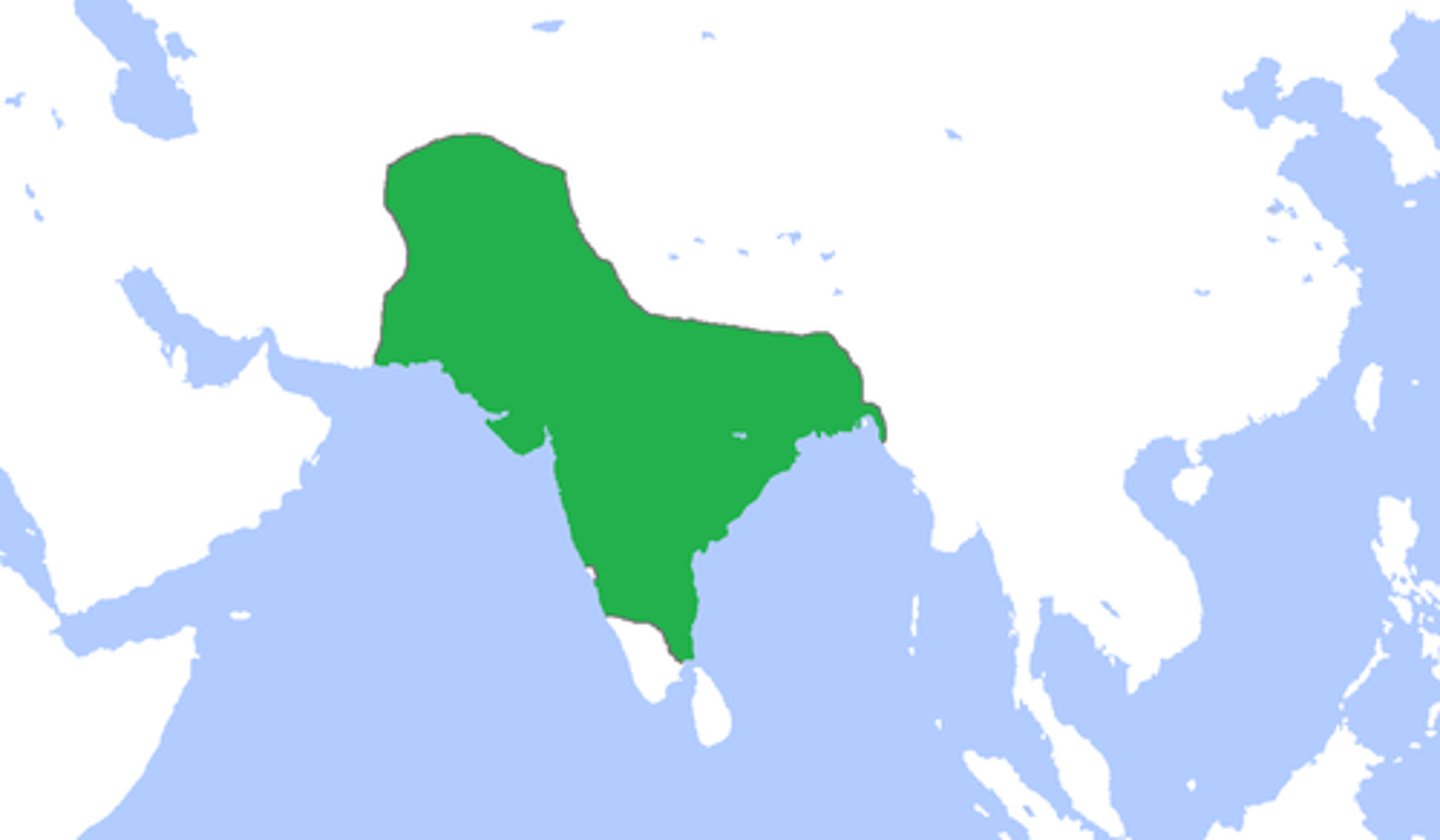
Ottoman Empire
Islamic state founded by Osman in northwestern Anatolia. After the fall of the Byzantine Empire, the Ottoman Empire was based at Istanbul (formerly Constantinople) from 1453-1922. It encompassed lands in the Middle East, North Africa, the Caucasus, and eastern Europe.
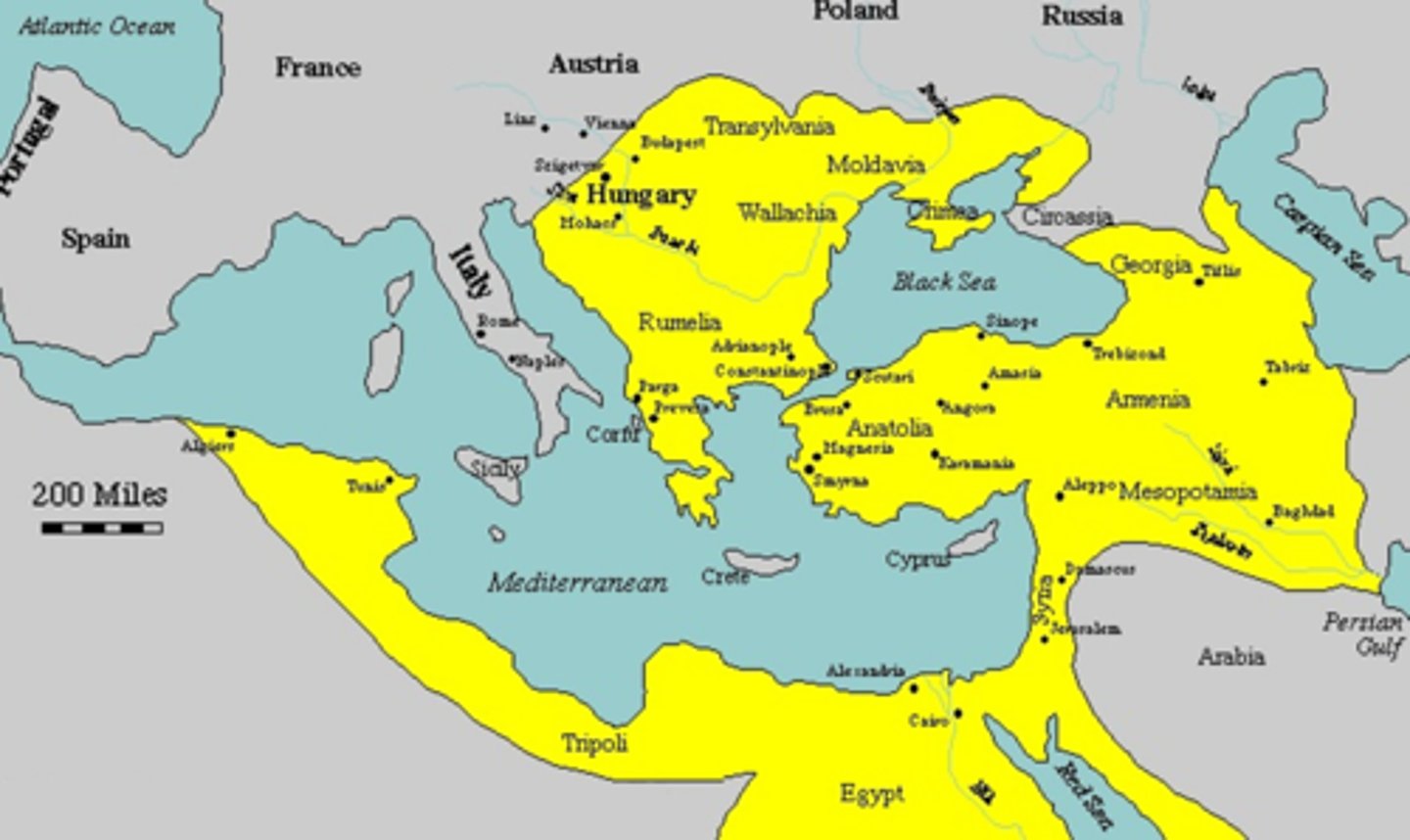
Safavids
A Shi'ite Muslim dynasty that ruled in Persia (Iran and parts of Iraq) from the 16th-18th centuries that had a mixed culture of the Persians, Ottomans and Arabs.
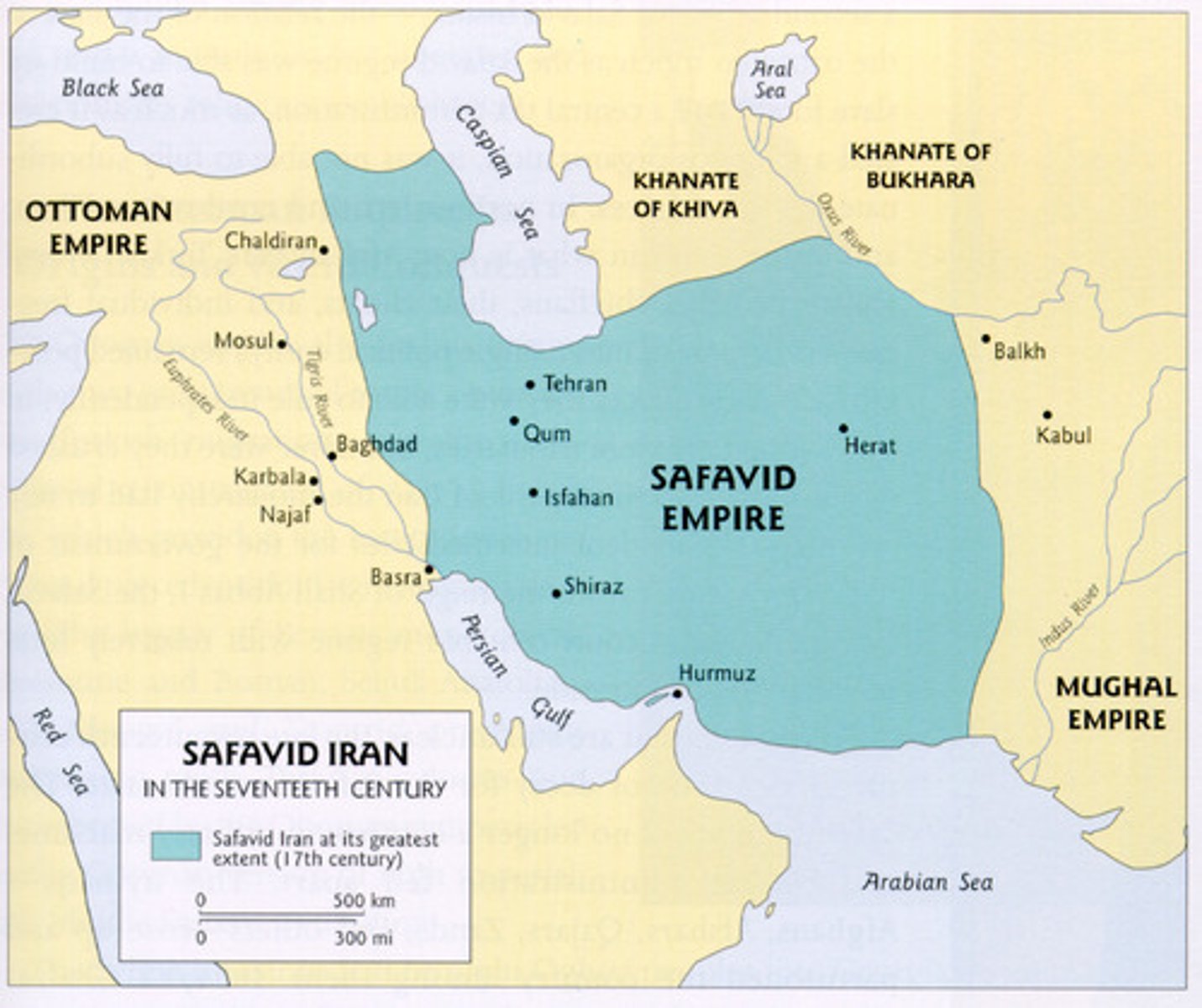
Songhai
a West African empire that conquered Mali and controlled trade from the into the 16th century; eventually defeated by the Moroccans who were broke after fighting with Portugal
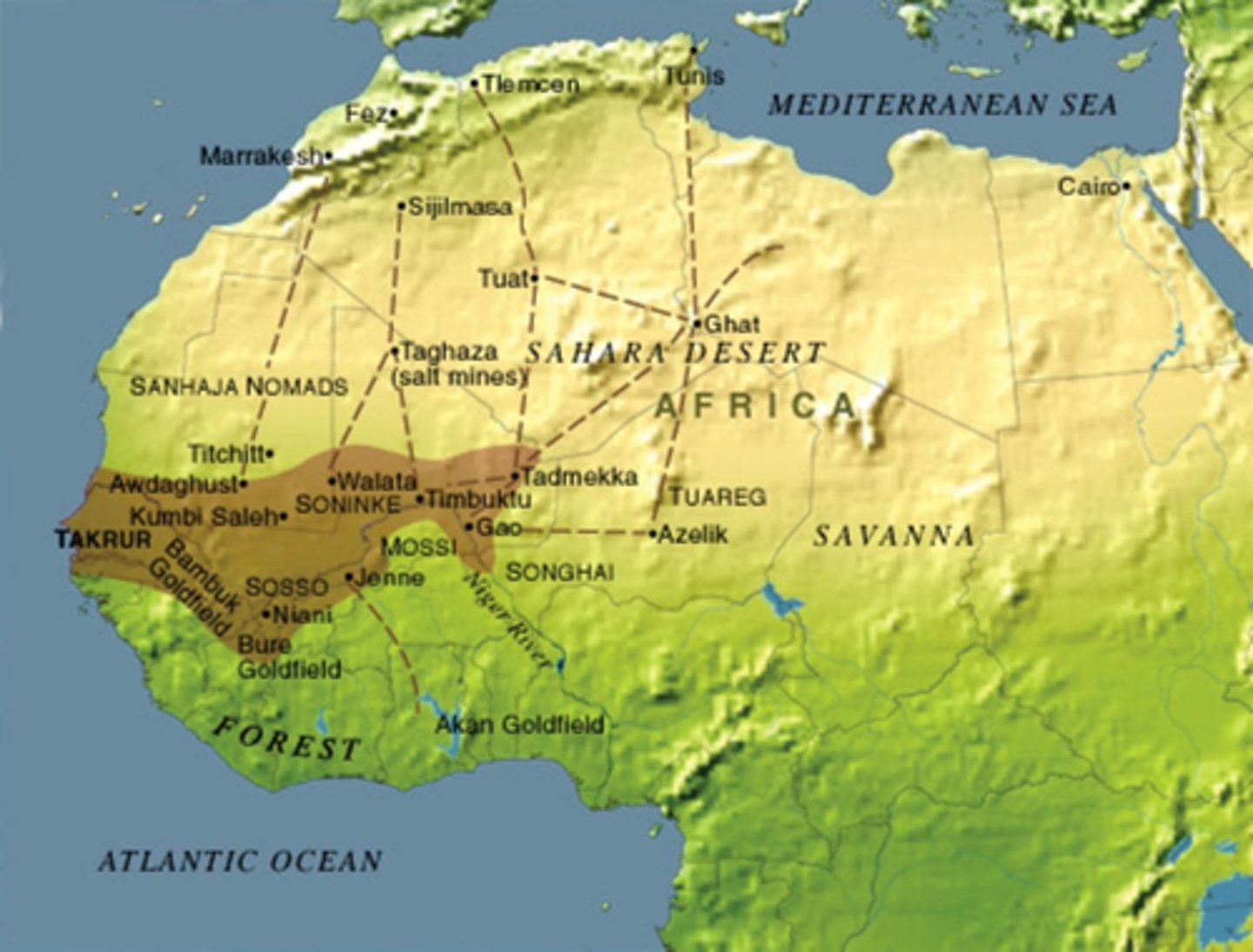
Devshirme
'Selection' in Turkish. The system by which boys from Christian communities were taken by the Ottoman state to serve as Janissaries (elite military units utilized by the Ottomans)
Janissary
elite Ottoman guard (trained as foot soldiers or administrators) recruited from the Christian population through the devshirme system, that often converted to Islam
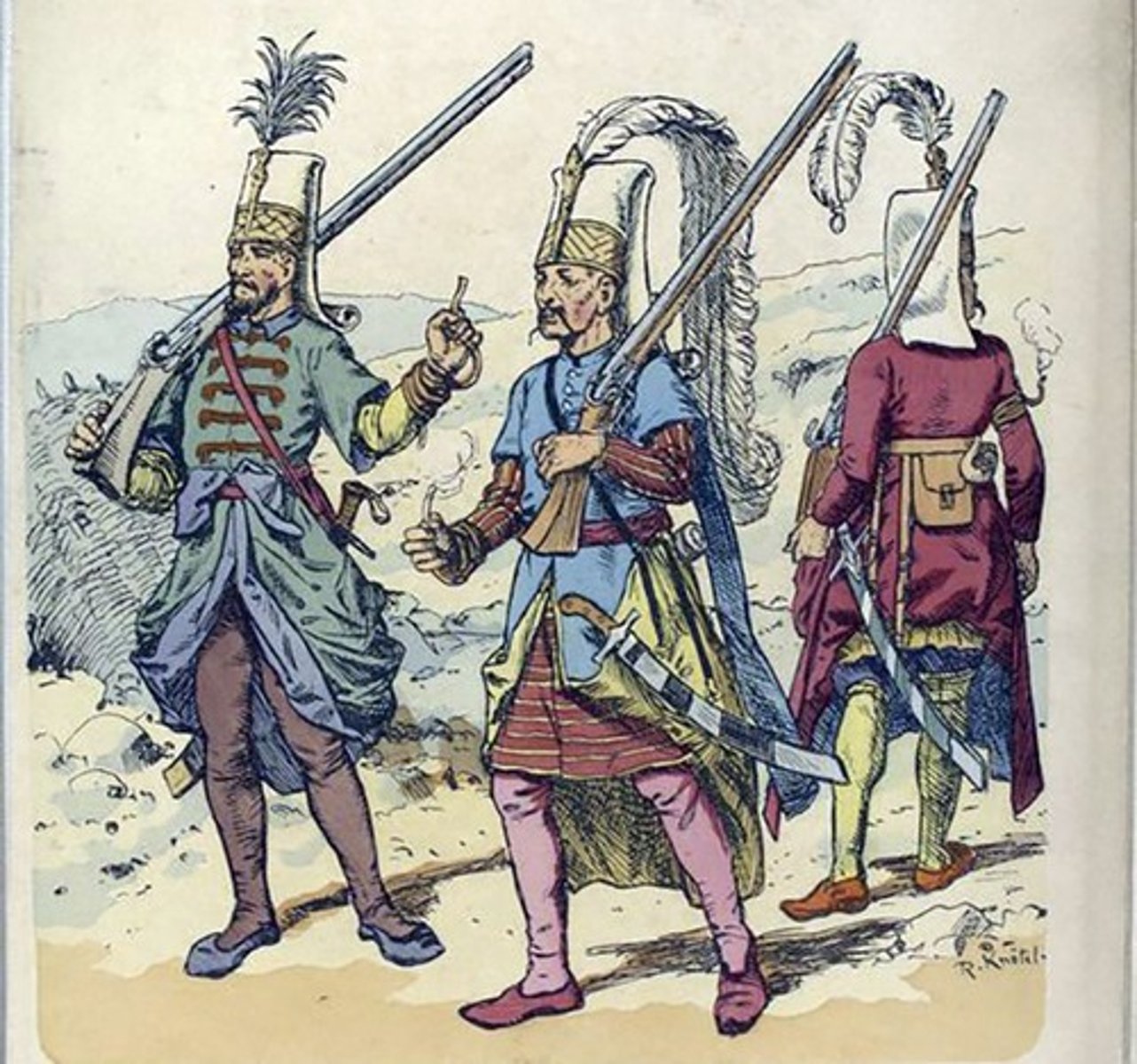
Samurai
Class of warriors in feudal Japan who pledged loyalty to a noble in return for land.
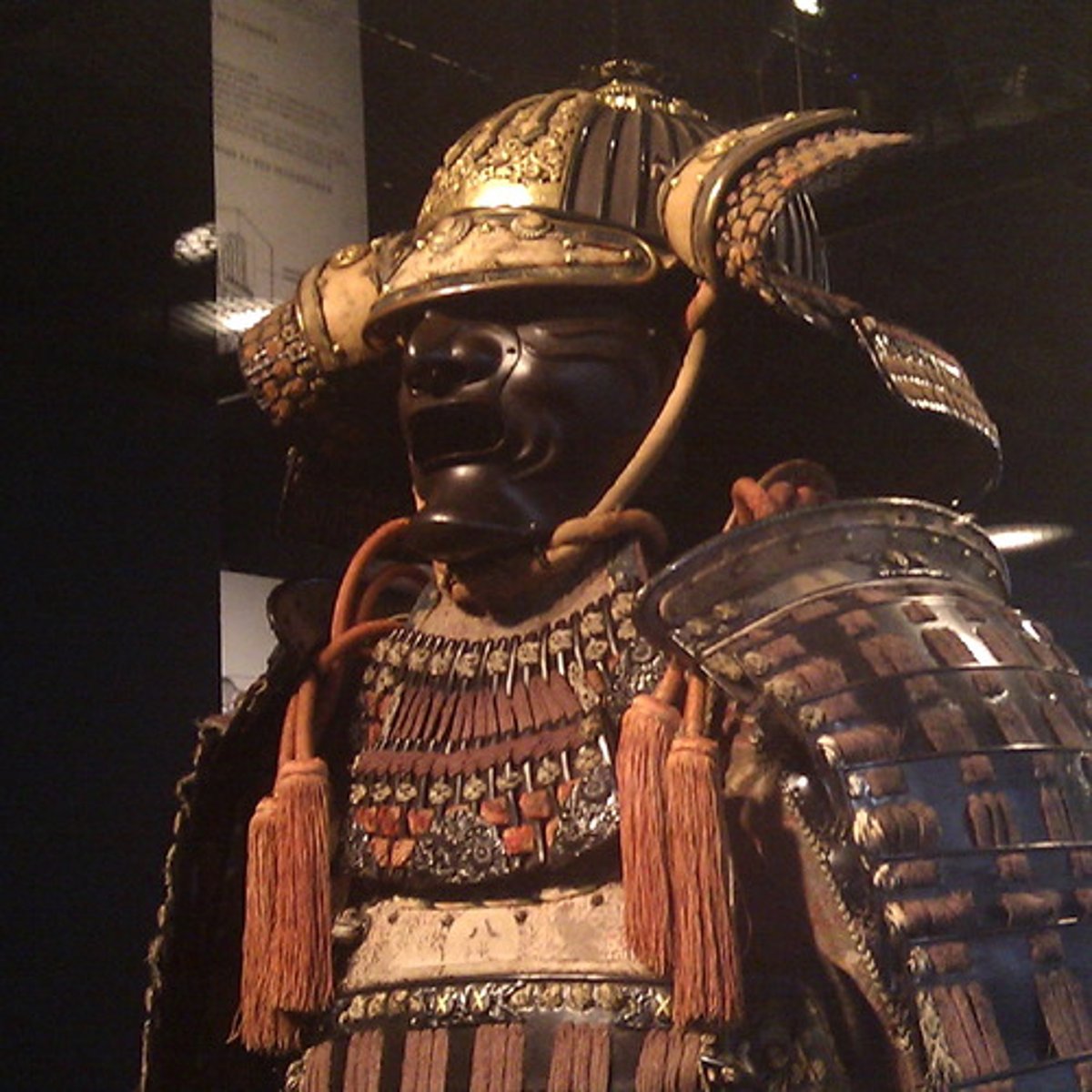
Divine Right
the idea that monarchs are God's representatives on earth and are therefore answerable only to God.
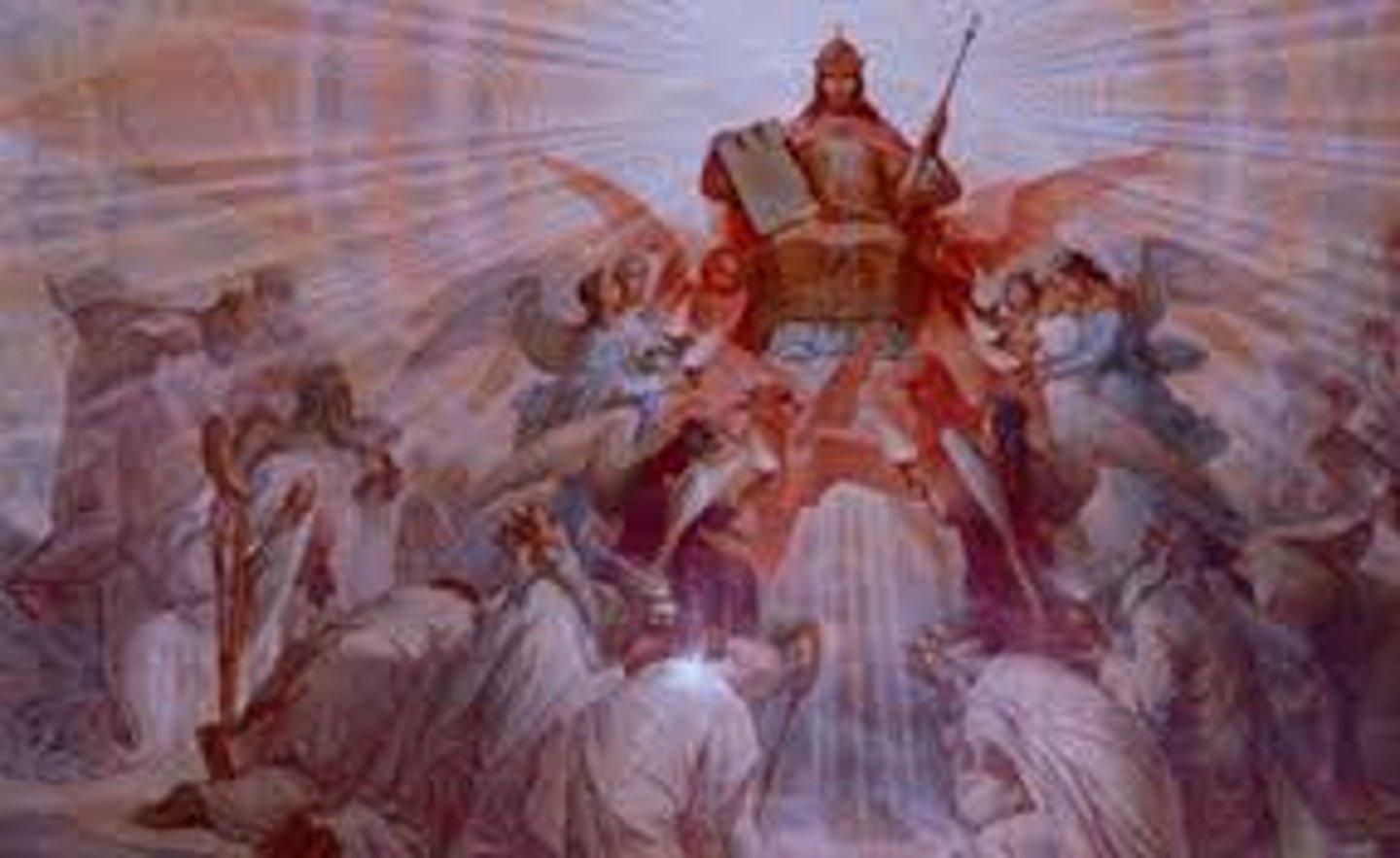
Absolute Monarchy
A system of government in which the head of state is a hereditary position and the king or queen has almost complete power
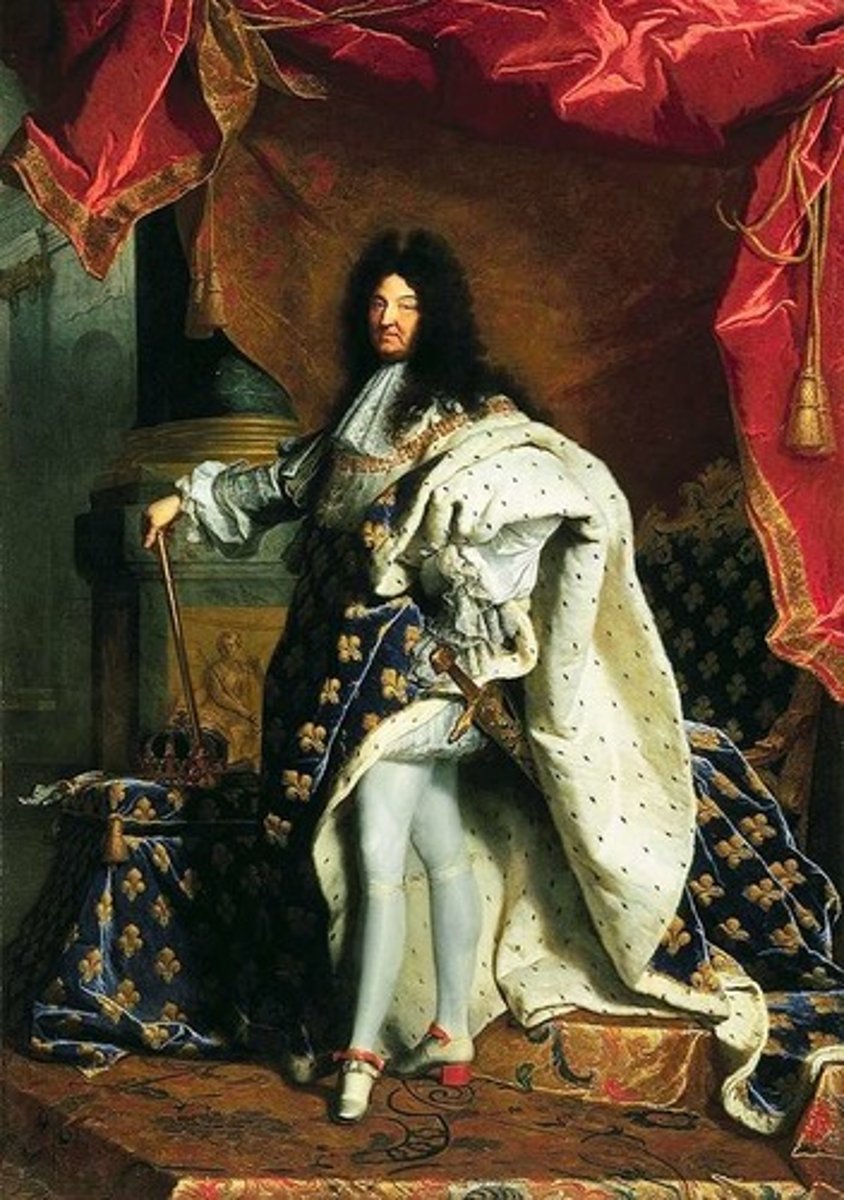
Versailles
Palace constructed by Louis XIV outside of Paris to glorify his rule and subdue the nobility.
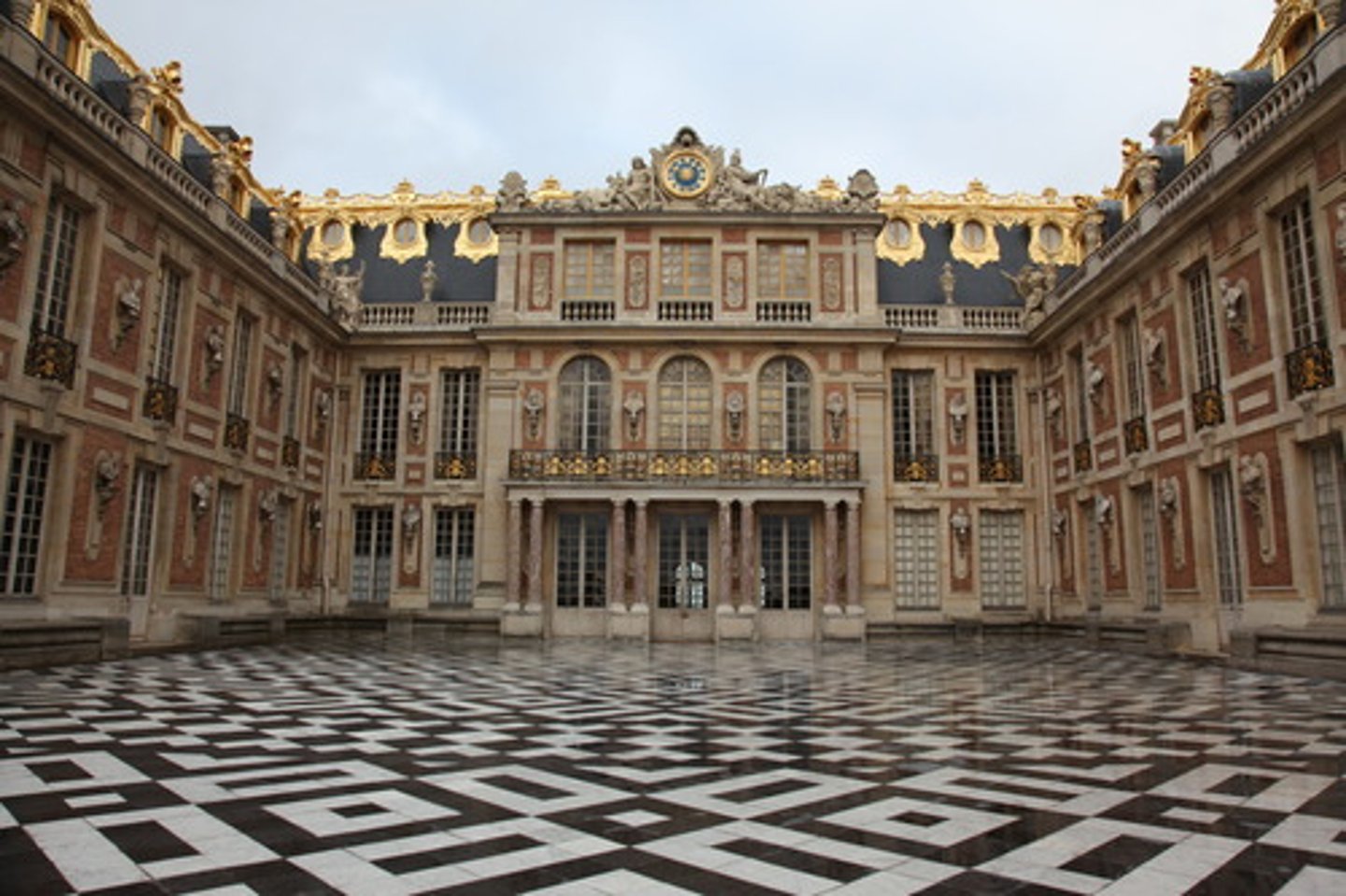
Zamindars
Archaic tax system of the Mughal empire where decentralized lords collected tribute for the emperor.
Taj Mahal
beautiful mausoleum (tomb) at Agra (India) built by the Mughal emperor Shah Jahan (completed in 1649) in memory of his favorite wife; illustrates syncretic blend between Indian and Arabic architectural styles
Protestant Reformation
Religious reform movement begun by Catholic monk Martin Luther who began to question the practices of the Latin Christian Church beginning in 1519. It spit the Roman Catholic Church and resulted in the 'protesters' forming several new Christian denominations, including the Lutheran, Calvinist, and Anglican Churches, among many others.
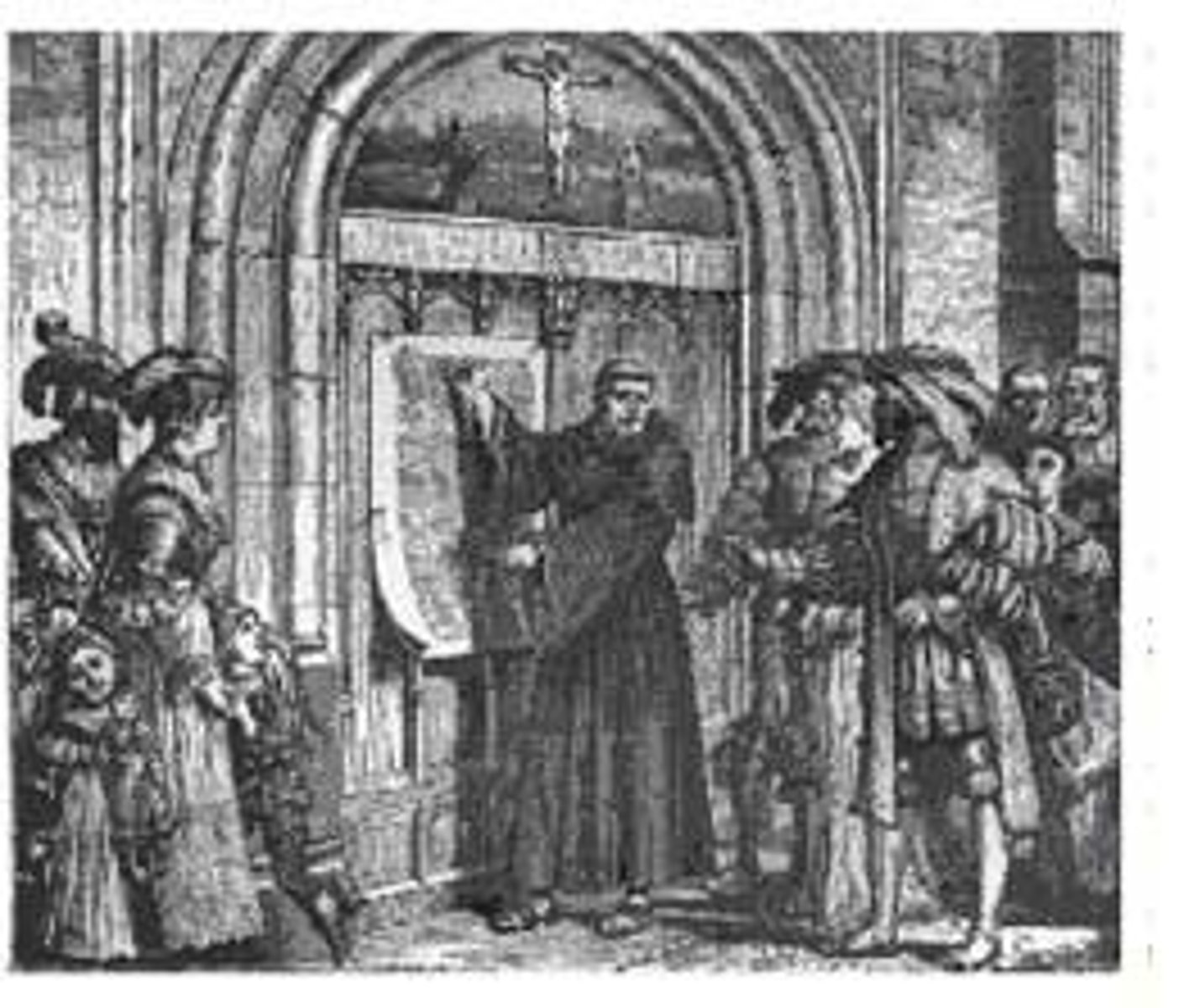
95 Theses
Arguments written by Martin Luther against the Catholic church. They were posted on October 31, 1517; ultimately led to Martin Luther's excommunication
Martin Luther
a German monk who became one of the most famous critics of the Roman Catholic Church. In 1517, he wrote 95 theses, or statements of belief attacking the church practices. Began the Protestant Reformation
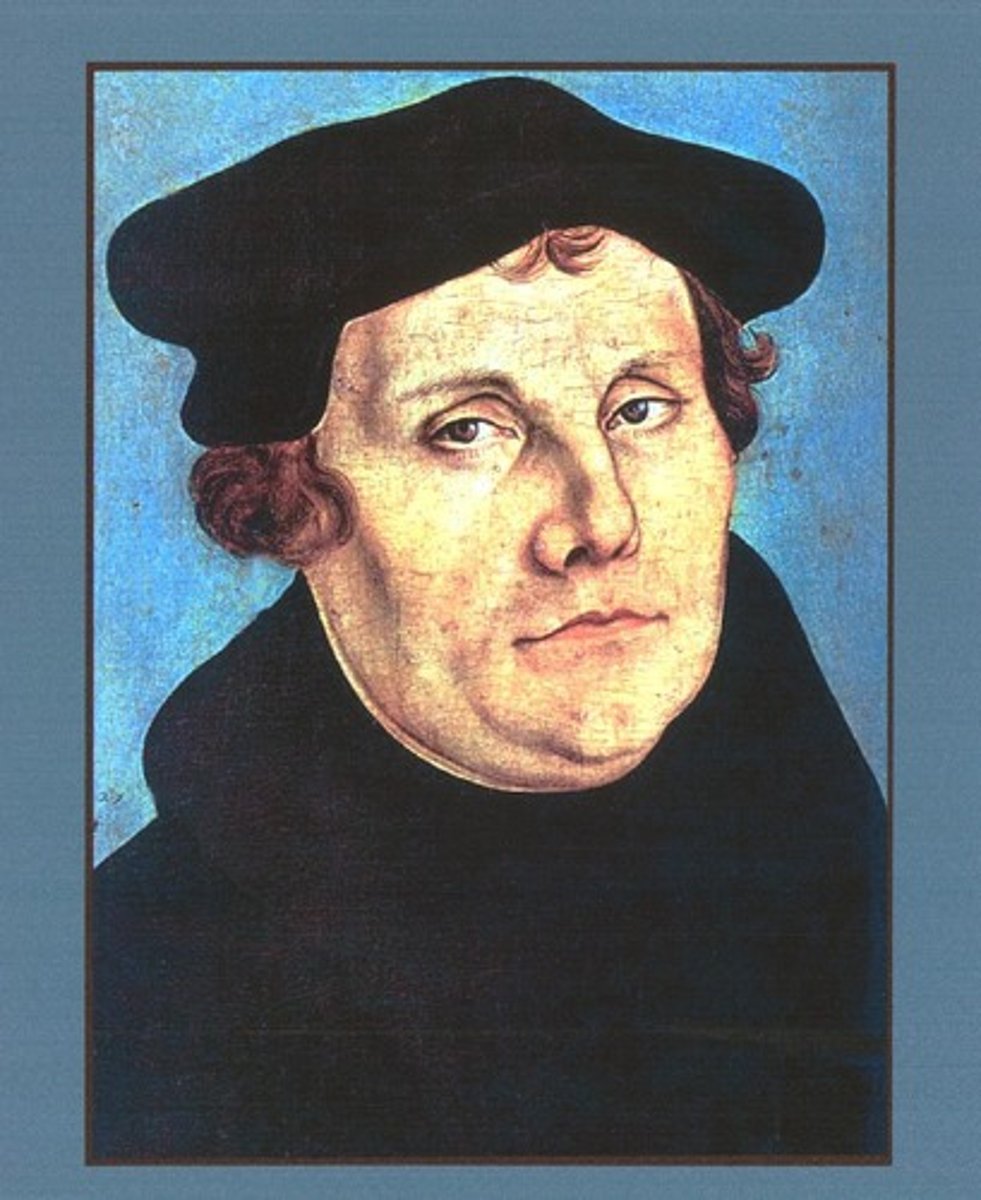
Counter or Catholic Reformation
the reaction of the Roman Catholic Church to the Reformation reaffirming the veneration of saints and the authority of the Pope (to which Protestants objected), ended sale of indulgences and simony, created Jesuits, but also the Inquisition
Jesuits
Also known as the Society of Jesus; founded by Ignatius Loyola (1491-1556) as a teaching and missionary order to resist the spread of Protestantism (a result of the Counter Reformation); were often sent to China, Japan, and around the world to gain Catholic converts
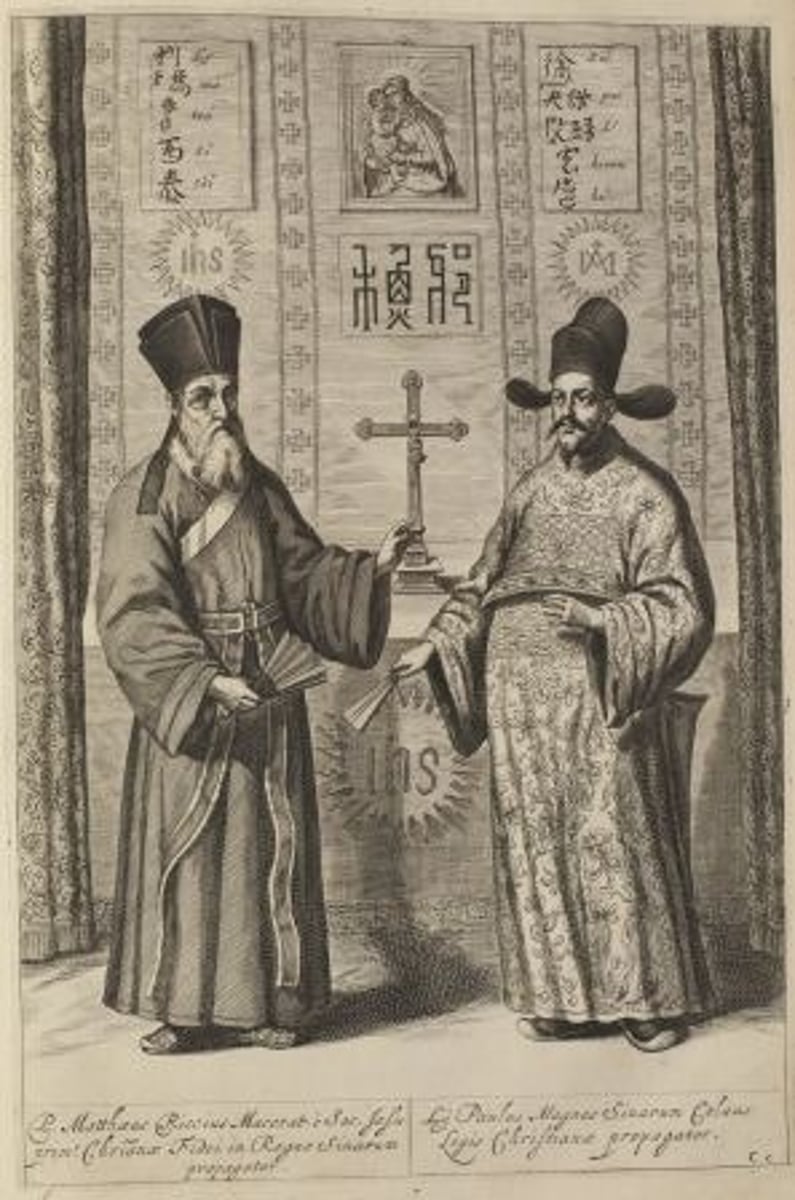
Indulgence
A pardon given by the Roman Catholic Church in return for repentance for sins

Simony
the buying and selling of church offices
Inquisition
A Roman Catholic tribunal for investigating and prosecuting charges of heresy, a reaction to the Protestant Reformation
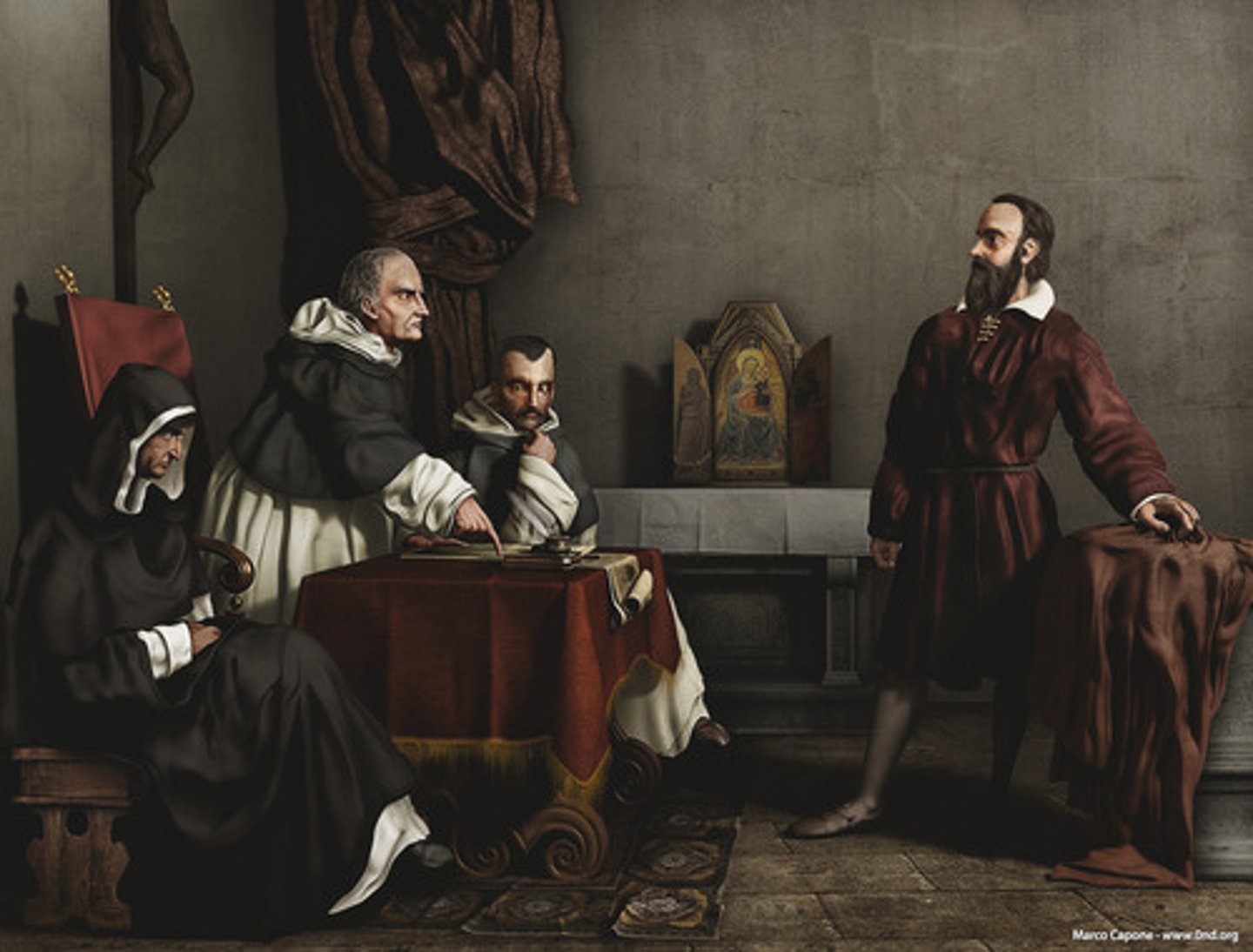
Thirty Years War
(1618-1648 CE) War within the Holy Roman Empire between German Protestants and their allies (Sweden, Denmark, France) and the emperor and his ally, Spain who supported Roman Catholicism; ended in 1648 after great destruction with Treaty of Westphalia; indicates the effects of the Protestant Reformation
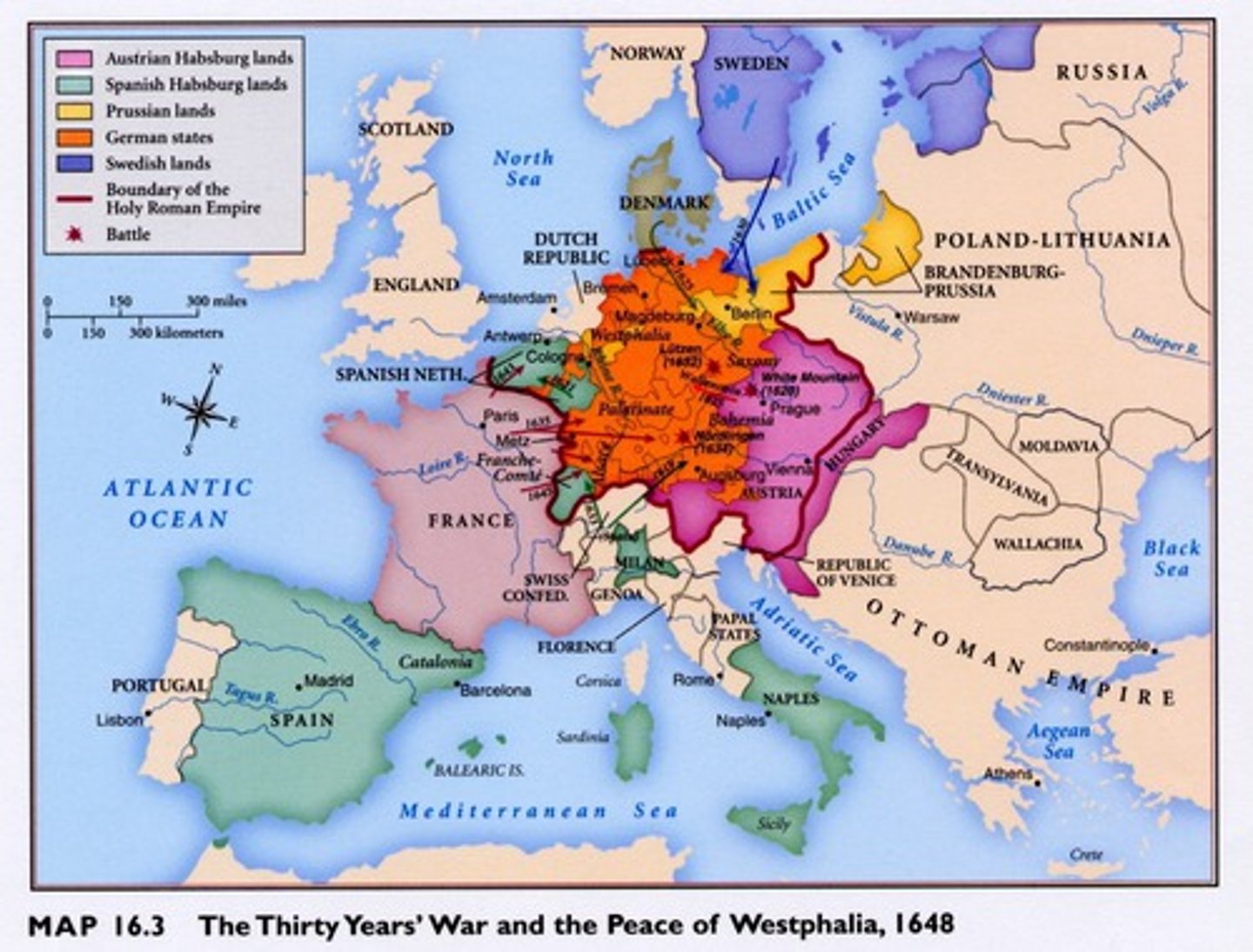
John Calvin
1509-1564. French theologian. Developed the Christian theology known as Calvinism. Attracted Protestant followers with his teachings; believed in predestination
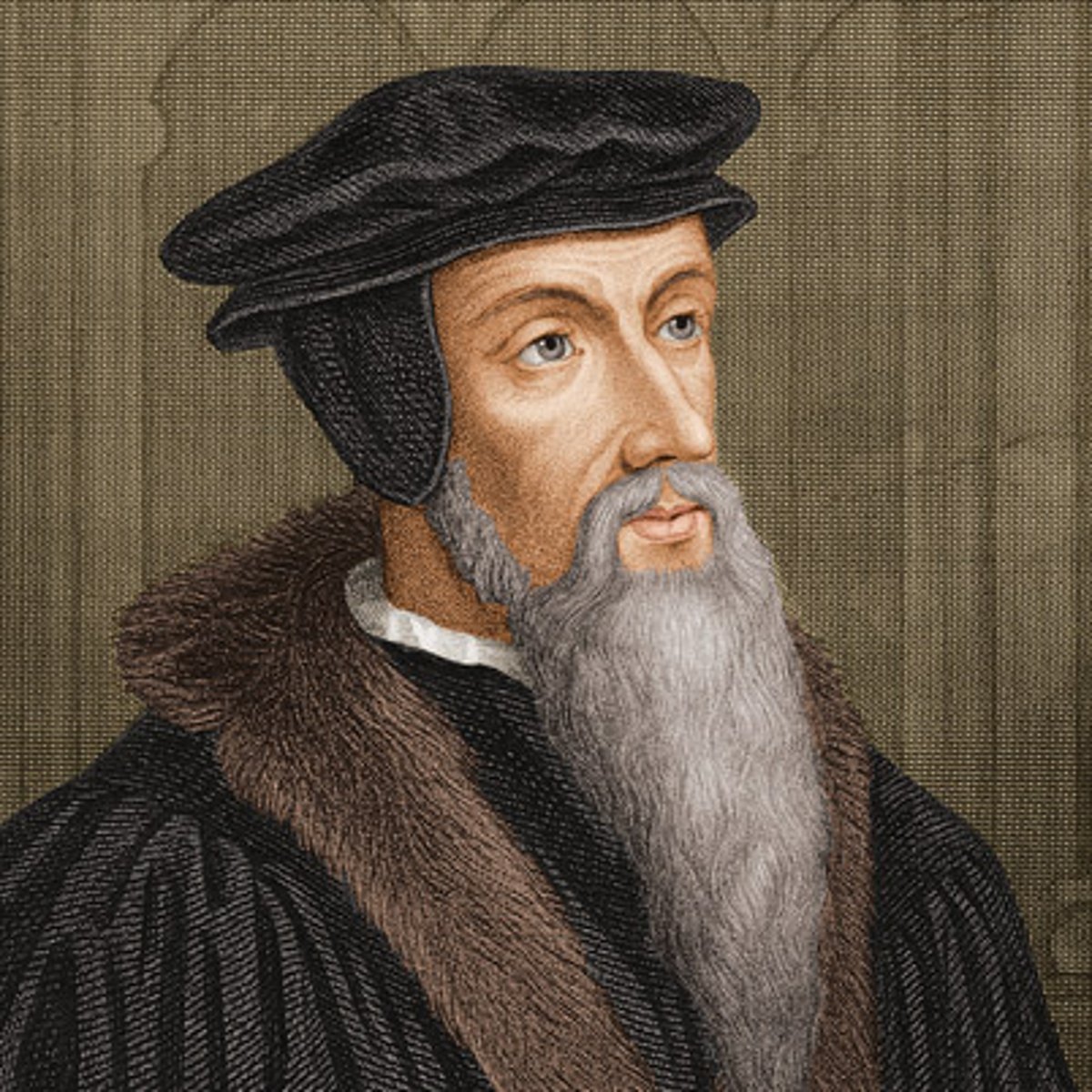
Shogunate
The Japanese system of government under a shogun (military warlord), who exercised actual power while the emperor was reduced to a figurehead.
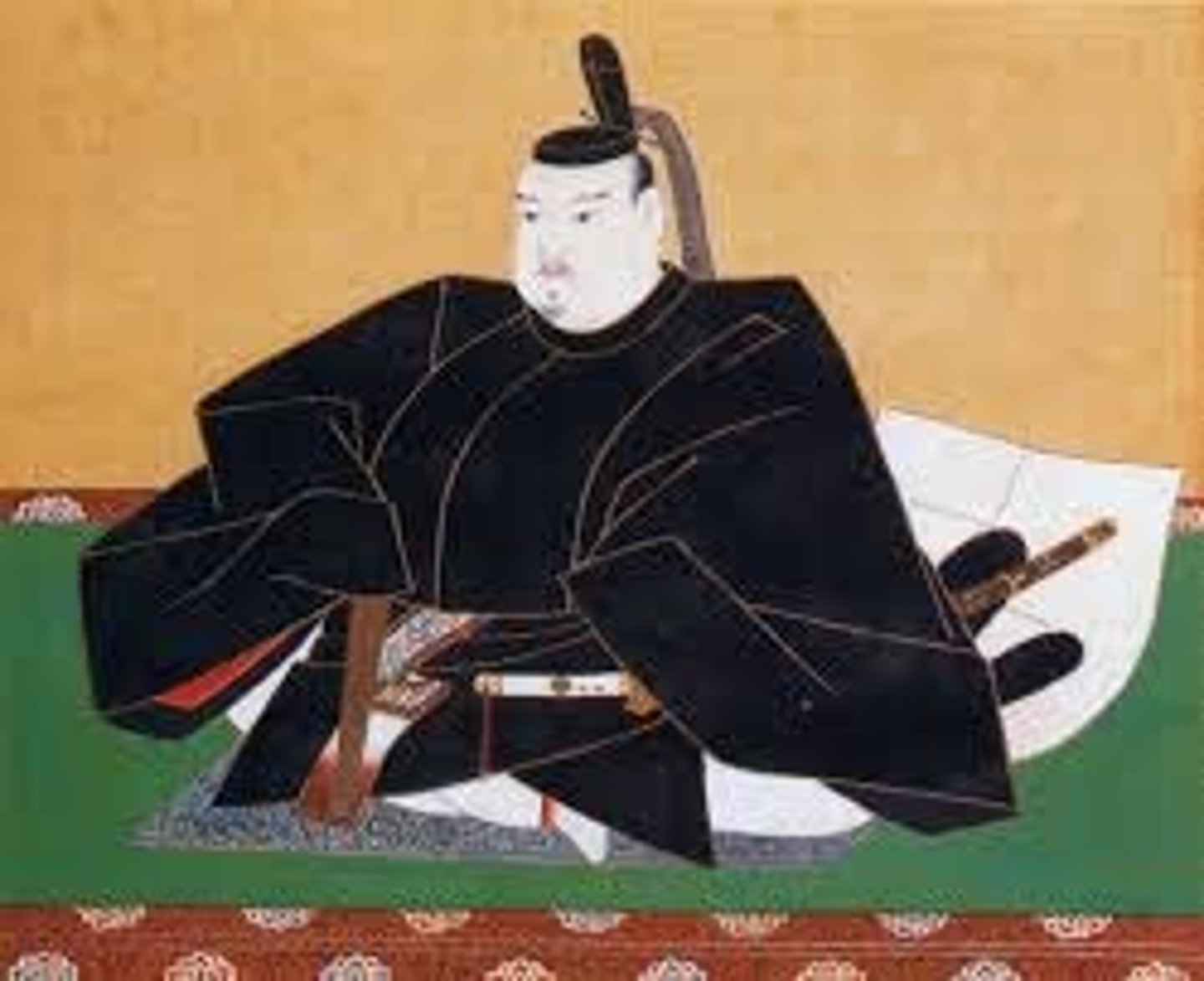
Gunpowder Empires
Muslim empires of the Ottomans, Safavids, and the Mughals that employed cannonry and gunpowder to advance their military causes.
Ivan IV (the Terrible)
Ruled from 1533-1584; Was responsible for the death of thousands, including his own son; Created the Oprichnina in order to destroy the Boyars; Believed in a Strong Centralized Government; expanded mostly south.
Siberia
Russia's great frontier region, a vast territory of what is now central and eastern Russia, most of it unsuited to agriculture but rich in mineral resources and fur-bearing animals.
Ming Dynasty
Succeeded Mongol Yuan dynasty in China in 1368; lasted until 1644; initially mounted huge trade expeditions to southern Asia and elsewhere, but later concentrated efforts on internal development within China.
Gutenberg Printing Press
Used to spread ideas of the Reformation and the Renaissance; First document printed was the Bible; Led to the growth of literacy
Great Wall of China
world's longest man made structure built to keep invaders from the north out of China, started by the Qin Dynasty, expanded by the Han Dynasty,
Kangxi
Qing emperor (r. 1662-1722). He oversaw the greatest expansion of the Qing Empire; promoted Confucian ideas and policies and expanded the Qing empire (Captured Taiwan, Mongolia, and parts of Central Asia- Tibet)
Qianlong
Chinese Qing emperor (r. 1736-1795), grandson of Kangxi who continued his grandfather's conquests by consolidating hold on Xinjiang province (westernmost). He made Vietnam, Burma and Nepal vassal states of China, and delegated responsibilities to his favorite Eunuchs, marking the decline of the Qing Dynasty
Tamarlane
an Islamic leader who was swept down from Samarkand. He proclaimed his family the new rulers of India and ruled as a powerful central authority from Samarkand.; A descendant of Genghis Khan. Conquered the Delhi Sultanate and ruled as a powerful central authority.
Suleiman I (the Magnificent, the Lawgiver)
Famous for expanding his empire to their greatest size, creating laws, and centralizing power to rule as a absolute ruler
Constantinople
A large and wealthy city that was the imperial capital of the Byzantine empire and later the Ottoman empire, now known as Istanbul
Shah
Persian word for king
Shah Abbas I the Great (1587-1629)
the fifth and most renowned ruler of the Safavid dynasty in Iran (r. 1587-1629); moved the royal capital to Isfahan in 1598; encouraged trade with other nations, and increased the use of gunpowder weapons. He Revitalized the SAFAVID empire.
Sunni vs. Shia
two separate branches of Islam, both believe fully in the Quran, but disagree about certain historical issues
Akbar the Great
(1542-1605) Emperor of the Mughal Empire in India. He is considered to be their greatest ruler. He is responsible for the expansion of his empire, the stability his administration gave to it, and the increasing of trade and cultural diffusion; known for religious tolerance. grandson of Babur who created a strong central government
Caste
any of the hereditary social classes in Hindu society; social stratification
English Bill of Rights (1689)
King William and Queen Mary accepted this document. It guaranteed certain rights to English citizens and declared that elections for Parliament would happen frequently. By accepting this document, they supported a limited monarchy, a system in which they shared their power with Parliament and the people; protected the rights of English citizens and became the basis for the U.S. Bill of Rights.
King Louis XIII
Continued the tradition of absolute rule in France, father of King Louis XIV
King Louis XIV
French king known as the Sun King. Absolute monarch "I am the State", Reigned from 1643 to 1715, built the Palace at Versailles as a testament to his power and authority, forced the French nobles to live at Versailles with him so that he could monitor the nobles
Peter the Great
(1672-1725) Russian tsar (r. 1689-1725). Westernized Russia, rules as an absolute monarch, He enthusiastically introduced Western languages and technologies to the Russian elite, moving the capital from Moscow to the new city of St. Petersburg.
Serfdom
A type of labor commonly used in feudal systems in which the laborers work the land in return for protection but they are bound to the land and are not allowed to leave or to peruse their a new occupation. This was common in early Medieval Europe as well as in Russia until the mid 19th century.
Romanov Dynasty
Dynasty that favored the nobles, reduced military obligations, expanded the Russian empire further east, and fought several unsuccessful wars, lasted from 1613 to 1917, overthrown during the Russian Revolution by the Bolshevks
Daimyo
A Japanese feudal lord who commanded a private army of samurai, one of the great lords who were vassals of the shogun.
Edo
Tokugawa capital city; modern-day Tokyo; center of the Tokugawa shogunate.
Tokugawa Ieyasu
Vassal of Toyotomi Hideyoshi; succeeded him as most powerful military figure in Japan; granted title of shogun in 1603 and established Tokugawa Shogunate; established political unity in Japan.
Tokugawa Shogunate
was a semi-feudal government of Japan in which one of the shoguns unified the country under his family's rule. They moved the capital to Edo, which now is called Tokyo. This family ruled from Edo 1868, when it was abolished during the Meiji Restoration.
shogun
In feudal Japan, a noble similar to a duke. They were the military commanders and the actual rulers of Japan for many centuries while the Emperor was a powerless spiritual figure.
Shah Jahan
Mogul/Mughal emperor of India during whose reign the finest monuments of Mogul architecture were built (including the Taj Mahal at Agra) (1592-1666)
Istanbul
Capital of the Ottoman Empire; named this after 1453 and the sack of Constantinople.
tribute
Money paid by one country to another in return for protection
King Henry IV of France
He was a Huguenot who inherited the French throne in 1589. He worked to fight the Catholics for many years, but converted to Catholicism "Paris is worth a mass". Eventually issued the Edict of Nantes in 1595, which gave the Huguenots religious toleration. His goal was to put "a chicken in every pot." He increased the bureaucracy and worked to reduce the power of the nobles. This paved the way for future kings to rule without any check on their power. In 1610, he was assassinated, leaving the throne to his nine-year old son, Louis XIII.
Babylonian Captivity
The period from 1309 to 1376 when the popes resided in Avignon rather than in Rome. The phrase refers to the seventy years when the Hebrews were held captive in Babylon.
Lutheranism
the religious doctrine that Martin Luther developed; it differed from Catholicism in the doctrine of salvation, which Luther believed could be achieved by faith alone, not by good works; Lutheranism was the first Protestant faith
Calvinism
Protestant sect founded by John Calvin. Emphasized a strong moral code and believed in predestination (the idea that God decided whether or not a person would be saved as soon as they were born). Calvinists supported constitutional representative government and the separation of church and state.
Predestination
Calvinist belief that God long ago determined who would gain salvation
Puritan
a member of a group of English Protestants of the late 16th and 17th centuries who regarded the Reformation of the Church of England under Elizabeth as incomplete and sought to simplify and regulate forms of worship; A religious group who wanted to purify the Church of England. They came to America for religious freedom and settled Massachusetts Bay.
Anglicanism (Church of England)
-Formed by Henry VIII in 1534 because he wanted to marry Anne Boelyn
-set England at odds with the rest of Europe and the Roman Catholic Church especially
-formed through the issuance of the "Act of Supremacy"
King Henry VIII
(1491-1547) King of England, he split with the Catholic Church and declared himself head of the Church of England, or Anglican Church because he wasn't granted a divorce by the Catholic Church. Was excommunicated by the Pope. Father of Elizabeth I
Anglican Church
Form of Protestantism set up in England after 1534; established by Henry VIII with himself as head, at least in part to obtain a divorce from his first wife; became increasingly Protestant following Henry's death
Council of Trent (1545-1563)
The congress of learned Roman Catholic authorities that met to reform abusive church practices and reconcile with the Protestants. - Reformed Catholic Church discipline and reaffirmed church doctrine. Preserved the papacy as the center of Christianity. Confirmed all seven existing sacraments. Reaffirmed Latin as the language of worship. Forbade clerical marriage.
King Phillip II of Spain
A strong Catholic King, Philippines were named after him, king of Spain and Portugal (seized Portugal) and husband of Mary I; supported the Counter Reformation and sent the Spanish Armada to invade England. His Spanish Armada was crushed in a storm on its way to British Isles
Spanish Armada (1588)
Spanish fleet defeated in the English Channel in 1588. The defeat of the Armada marked the beginning of the decline of the Spanish Empire.
Edict of Nantes (1598)
Decree issued by the French crown granting limited toleration to French Protestants. Ended religious wars in France and inaugurated a period of French preeminence in Europe and across the Atlantic. Its repeal in 1685 prompted a fresh migration of Protestant Huguenots to North America.
Peace of Westphalia (1648)
1. Ended the Thirty Years' War
2. Recognized Calvinism as a legally permissible faith
3. Recognized the sovereign independent authority of over 300 German states
4. Continued the political fragmentation of Germany
5. Granted Sweden additional territory, confirming its status as a major power
6. Acknowledged the independence of the United Provinces of the Netherlands
Zamindar
a local official in Mogul/Mughal India who received a plot of farmland for temporary use in return for collecting taxes for the central government
Scientific Revolution
A major change in European thought, starting in the mid-1500s, in which the study of the natural world began to be characterized by careful observation and the questioning of accepted beliefs.
Land Based Empires
Nations who built larger empires by controlling large tracts of continental territory